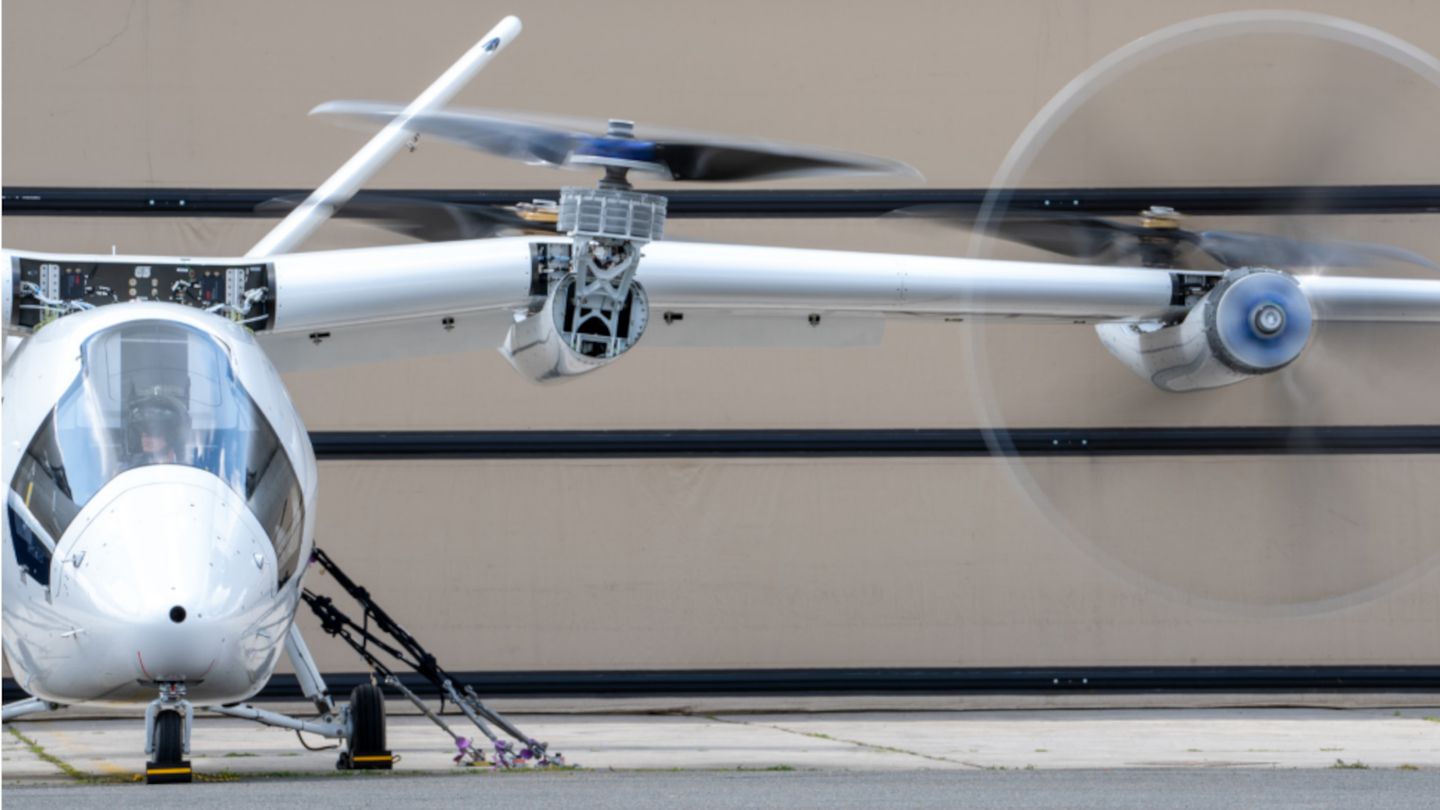Vertical Aerospace Begins Testing New Air Taxi Prototype
The U.K. manufacturer is back to trials after an initial prototype aircraft suffered a crash last year.

Vertical Aerospace chief test pilot Justin Paines sits in the cockpit of the company’s VX4 air taxi during propeller testing. [Courtesy: Vertical Aerospace]
U.K.-based electric vertical takeoff and landing (eVTOL) air taxi manufacturer Vertical Aerospace is back to testing aircraft.
The manufacturer has begun ground testing a new, more advanced full-scale prototype of its flagship VX4 air taxi after an initial prototype was damaged during an uncrewed flight test last year.
A failed pylon affected the way the aircraft’s flight control system communicated with its motors, causing it to tumble from about 30 feet in the air onto the runway at Cotswold Airport (EGBP) in the U.K.
Vertical’s latest prototype air taxi is more powerful, capable of reaching 150 mph—the intended cruise speed for its flagship model—courtesy of an improved power-to-weight ratio. It features new propellers, which were developed prior to last year’s crash, and proprietary battery technology manufactured at a dedicated facility in Bristol.
Sixty percent of the aircraft’s technology and components come from suppliers including Honeywell, Leonardo, GKN Aerospace, Hanwha, and Molicel, compared to 10 percent on the first prototype. The company is also developing an identical prototype.
The new aircraft and its systems have been tested and commissioned, and Vertical has already completed initial ground testing, including propeller balancing and spinning tests that measure the weight distribution of each blade. The next step will be powered propulsion system testing of the air taxi’s powertrain and battery packs, during which the engines will be run while the vehicle is anchored.
After that, Vertical will need to secure a permit to fly from the U.K.’s Civil Aviation Authority (CAA), which will allow it to move to the “wheels up” phase: crewed testing of tethered aircraft and low-speed untethered flights. It will also need to perform thrustborne, wingborne, and transition flights, demonstrating that the aircraft can maneuver and gain lift as expected.
The manufacturer’s type certification safety target is the same as that for commercial airliners. Its flagship model will enable a pilot to fly as many as four passengers up to 100 sm (87 nm) while producing zero operating emissions and just 50 dBA of noise during cruise, which the company says allows it to fit seamlessly within an urban soundscape. The firm claims it will be capable of flying from Miami to Fort Lauderdale, Florida, in only 11 minutes.
Despite suffering a crash, Vertical continues to receive support from the U.K. government, which in February awarded it $10 million to develop its next-generation propellers. The allocation brings the manufacturer’s total U.K. government grant funding received to $47 million
Vertical founder Stephen Fitzpatrick also committed $50 million to the company, which he predicted would keep it liquid through mid-2025. The money will be used to support the aircraft testing and certification process, which the manufacturer hopes to complete by the end of 2026.
Like this story? We think you'll also like the Future of FLYING newsletter sent every Thursday afternoon. Sign up now.

Sign-up for newsletters & special offers!
Get the latest FLYING stories & special offers delivered directly to your inbox






